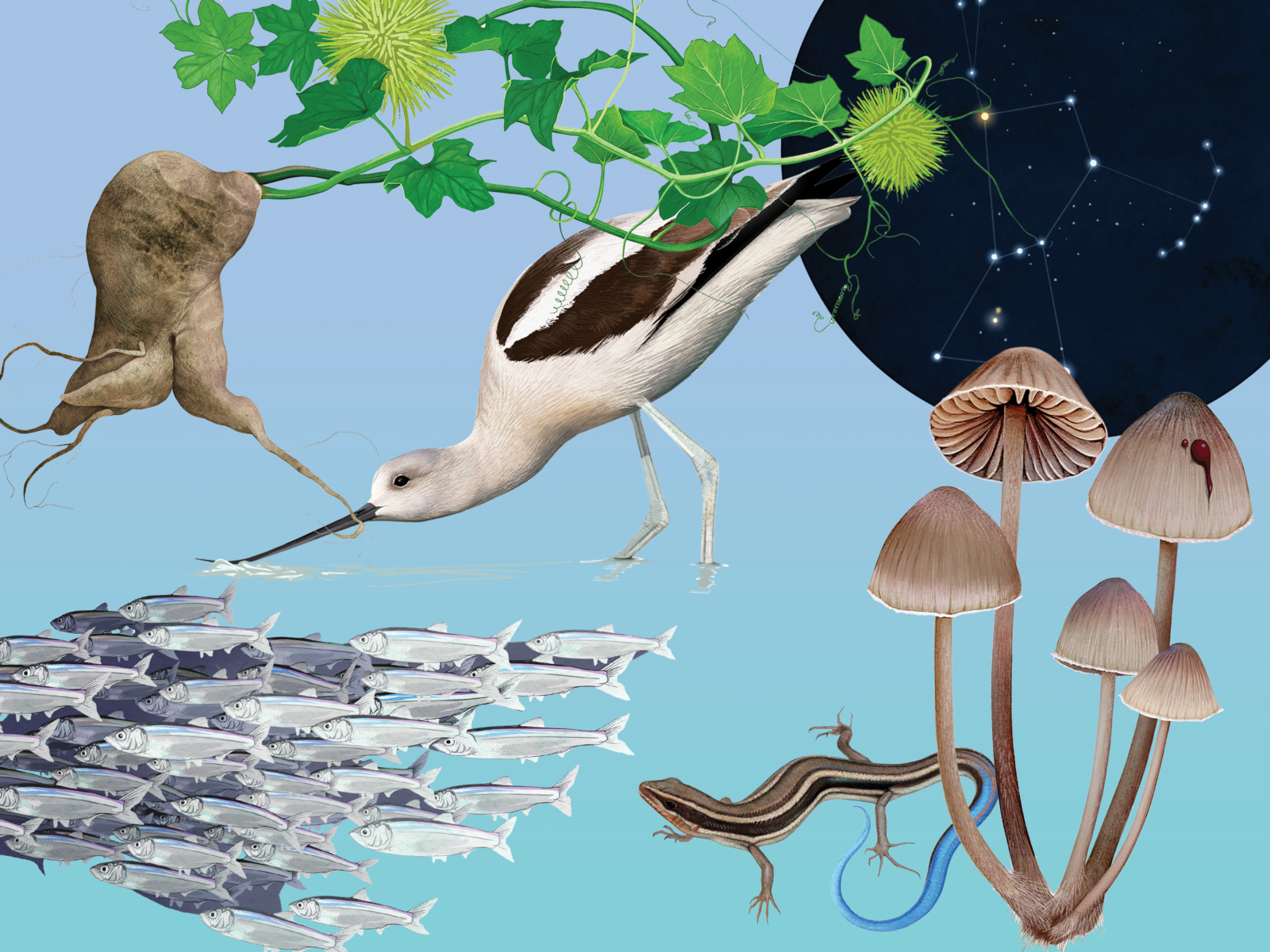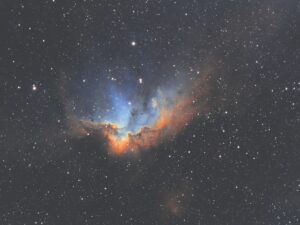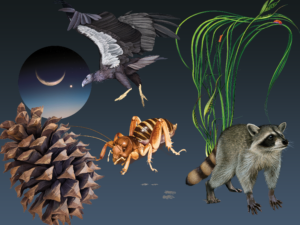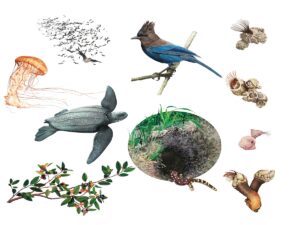Words by Bay Nature staff; illustrations by Jane Kim.

Night sky: Orion
In winter the constellation Orion hovers bright in the Bay Area’s night sky. Its stars—which include the easy-to-find two shoulders, two feet, and three-star belt—have together been cast as all manner of characters for millennia the world over. In the West, we’ve named it for the great hunter of Greek myth fame. In Edgar and Ingri D’Aulaire’s telling, when mortal Orion befriends the goddess Artemis, her jealous brother Apollo sends an enormous scorpion to battle the hunter. It stings his heel, and to commemorate him, the twin gods hang Orion’s image in the heavens. He fills the sky, guarding against winter, until the constellation Scorpio rises in summer. “Orion begins to sway and stagger, and then he, in his turn, flees and disappears into the ocean.”
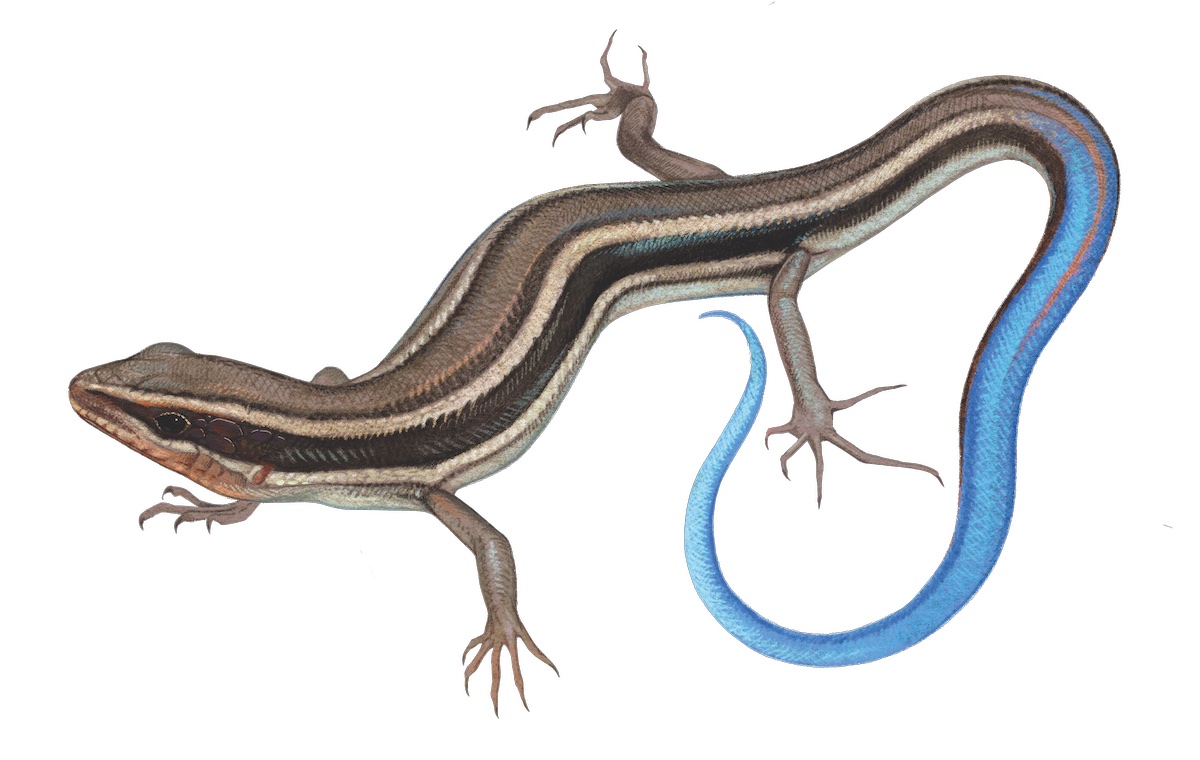
Blue surprise
You didn’t imagine it. That was a tiny blue tail you saw wriggling through the damp leaves and brush. And it was attached to a juvenile Western skink (Plestiodon skiltonianus) enjoying the Bay Area’s mild, wet winter. Or possibly it wasn’t attached. Possibly it was just a sign the lizard escaped, dropping its back half to shake off a predator and live another day.
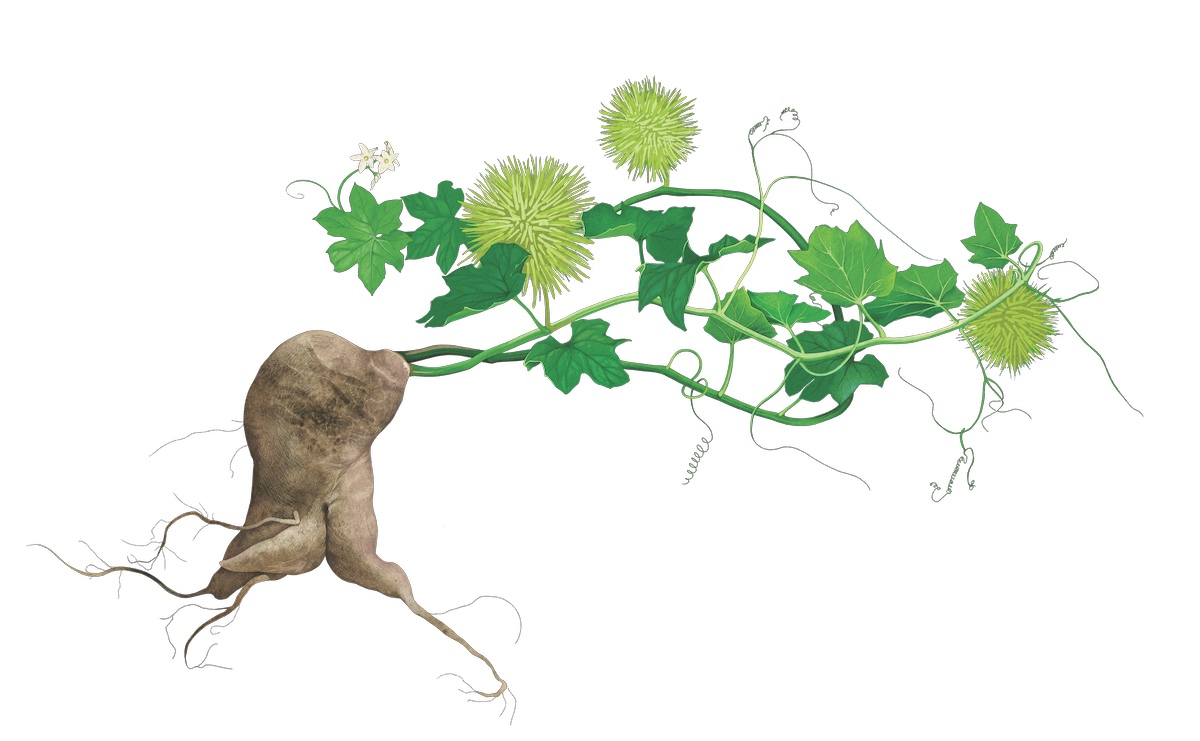
That’s a big man
As the rain begins to fall, tendrils of California manroot, or wild cucumber (Marah fabacea), start to grow, vining themselves up whatever they can cling to throughout the Bay Area. The green stems spring from huge underground tubers—weighing up to 440 pounds—that Coast Miwok tribal members described mashing and using to hunt in tidepools in the 1900s. Manroot contains certain saponins, chemicals with a soapy quality, that are well known to stun or kill fish.
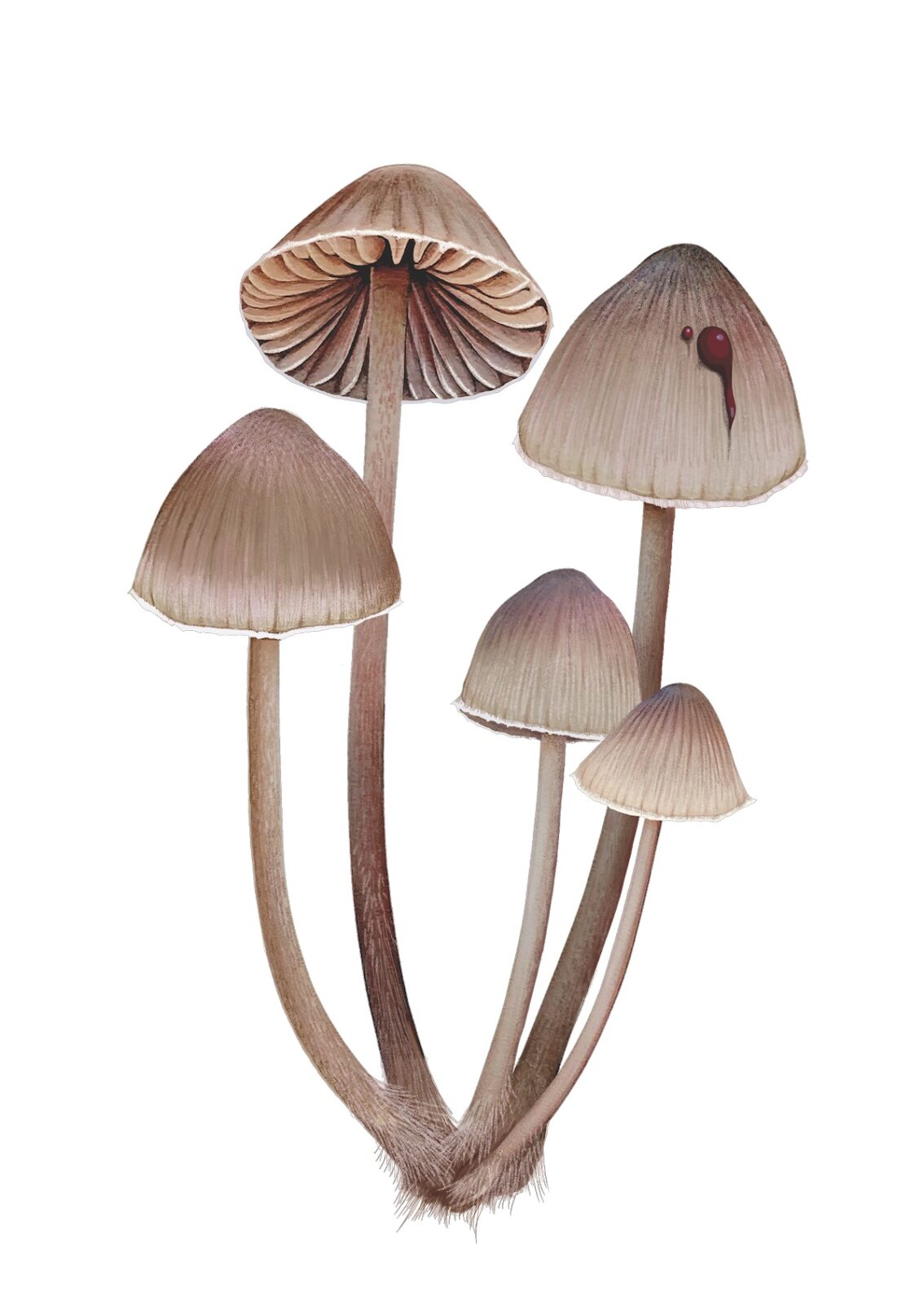
Not the president
When you really get into the gorgeous geekery of nature, the term LBJ starts to turn up. It means Little Brown Job, and it’s a friendly way of conceding you have no idea what to call that bird or this mushroom. The bleeding fairy helmet (Mycena haematopus) is almost an LBJ … until you prod its little brown-red cap and purple “blood” oozes, staining your fingers. The latex contains newly discovered alkaloid pigments that you probably shouldn’t eat, but that make IDing this particular LBJ—little bleeding job?—a little easier.

Rock stars
Sometime this winter, a ruckus in San Francisco Bay or Tomales Bay may catch your eye. It’ll be like a cabal of paparazzi, but made up of gulls, pelicans, harbor seals, and more, mobbing the water’s gray surface. Beneath it swim big schools of silvery Pacific herring (Clupea pallasii) that have arrived in the shallows to spawn among the eelgrass and rocks. A few weeks later millions of larvae will emerge, glittering like superstars that will feed the sea.
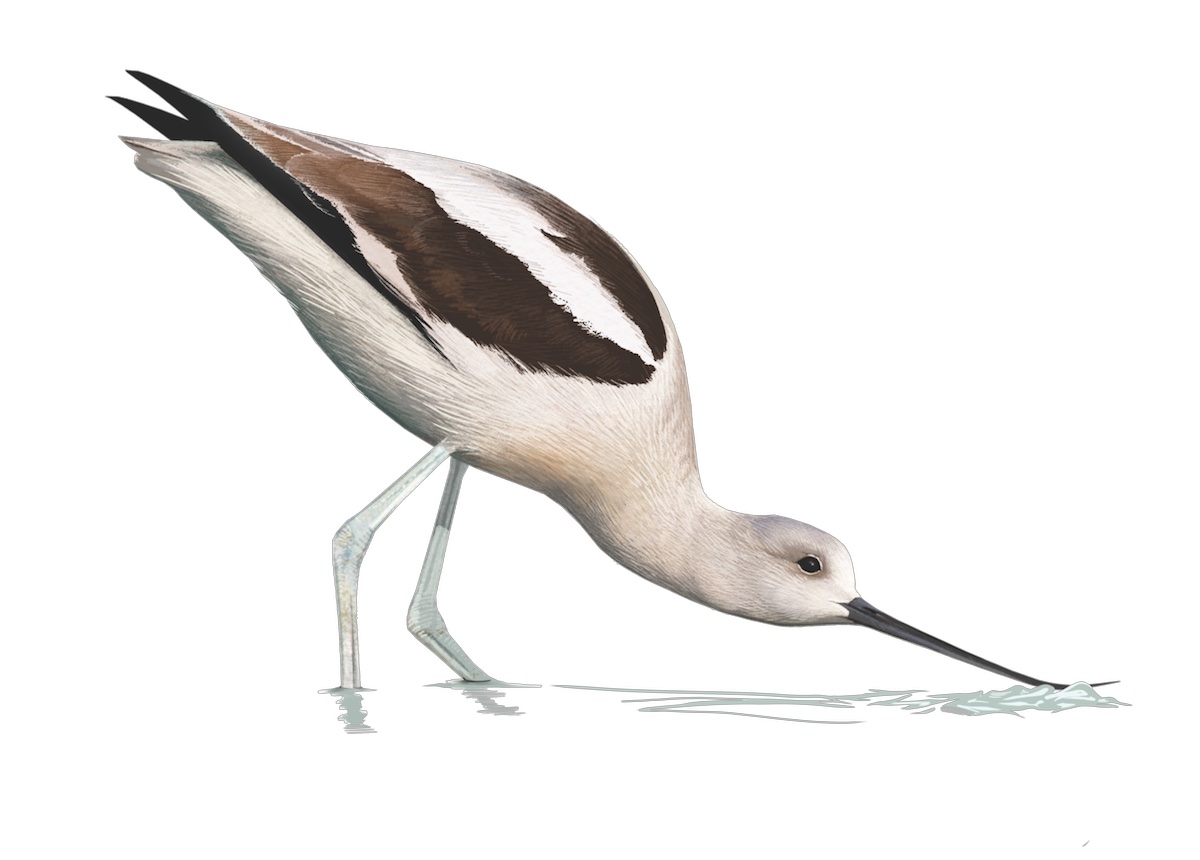
Bill of fare
No other shorebird bill turns up on the end quite like an American avocet’s (Recurvirostra americana). With that long, angled beak open just a smidge, avocets bend forward and frantically slice and roil the water—back and forth, back and forth—stirring up water boatmen, beetles, and all kinds of other tasty invertebrates. Avocets roam in flocks on Bay Area shores. They have heads of gray feathers, like most of us in our winter, though theirs turn rusty when breeding begins.

